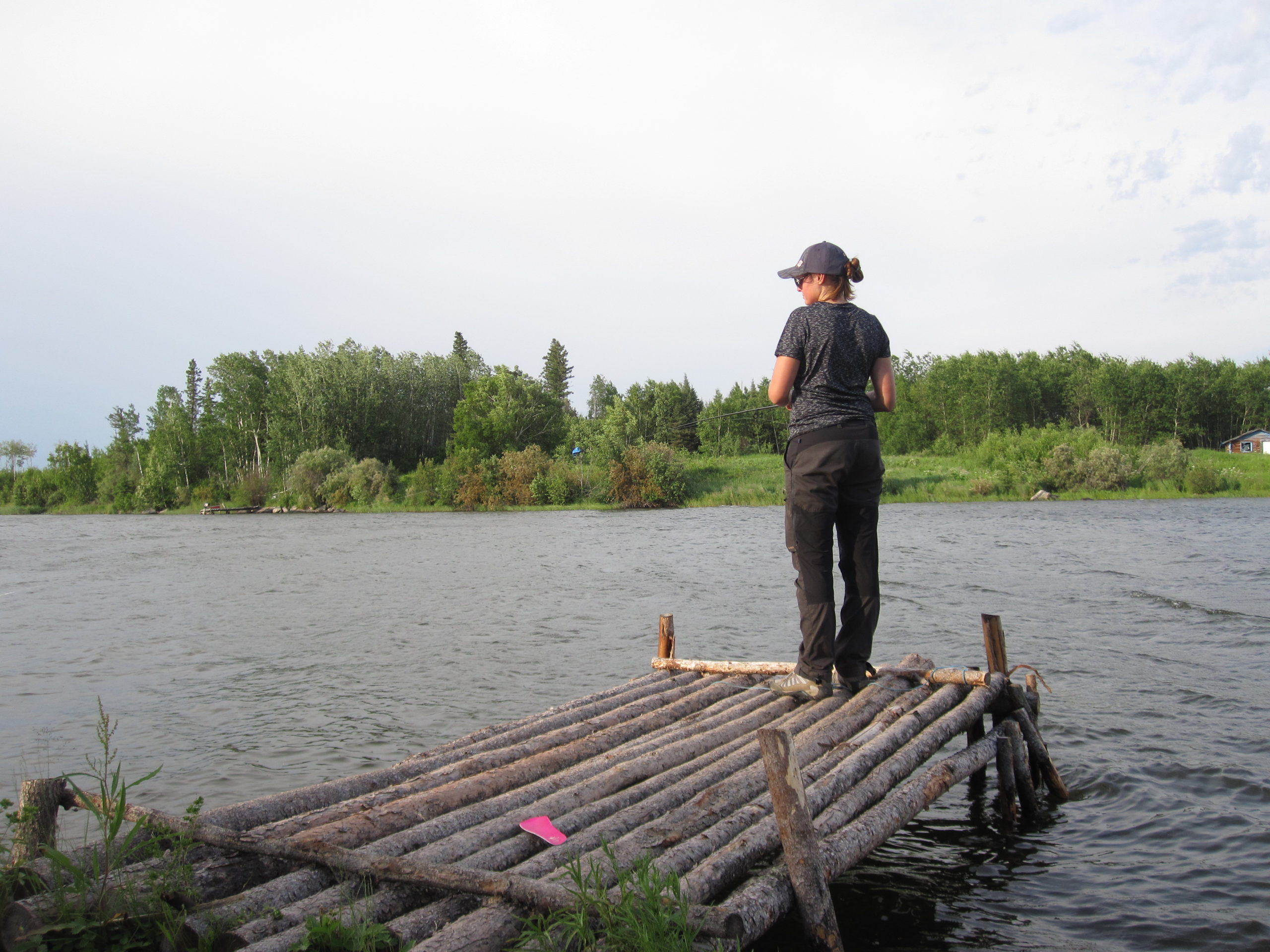Women in Conservation

This year for International Women’s Day, we sat down with Sarah Schmid.
Sarah wears many hats in her daily life. Based out of our Prince Albert office, she is CPAWS-SK’s northern projects manager and Indigenous relations correspondent— but she also works as the general manager of the Prince Albert Model Forest, wrangling projects and operating as part of the International Model Forest Network.
Read on for Sarah’s thoughts on relationship-building in the conservation industry, and how she is able use stereotypes about women to make her a more successful conservationist.
HOW DID YOU GET INTO CONSERVATION?
I’ve always been interested in working with animals. I wanted to be a vet for the longest time, but upon entering my final year of undergrad I was really fascinated with the ecology courses that I was taking. I wanted to go a little bit more broad and see what I could do with not just saving one animal at a time, but working to save different species and to protect and conserve entire ecosystems.
WHAT DOES A DAY’S WORK LOOK LIKE FOR YOU?
A day’s work is filled with managing the different projects that I have going on. A lot of our work focuses on woodland caribou, so our projects are all about conservation and protection of their critical habitat. Working to build relationships with Indigenous communities, industry, and government, and projects with the Indigenous Guardians, working to preserve a dwindling bison herd in Prince Albert National Park and the surrounding areas.
HOW DO YOUR TWO JOBS INTERSECT?
One of my jobs is more about grassroots, community-based work, and the other takes a lot of that work that is done with the communities and we are able to lobby for change with regards to working with government and industry. It takes the best of both worlds, taking something that was created in a neutral forum and being able to turn it into action.
WHAT IS THE MOST IMPORTANT PART OF YOUR JOB?
The most important thing that I do is all in the building and maintaining of relationships. It’s crucial when you’re managing a project that you have those partnerships built, or that you’re building towards them— or else they’re not going to succeed in the long term.
DO YOU HAVE A PROJECT THAT YOU’RE ESPECIALLY PROUD OF RIGHT NOW?
I’m really proud of the Indigenous Guardians program. Nothing like it has existed in Saskatchewan before, and I’m hoping that we start to see the benefits in terms of the actual conservation and protection of the Sturgeon River Bison Herd. I see it as one of my most important projects because it works directly with an Indigenous community and with the Indigenous youth, including them from beginning to end.
WHAT DOES IT MEAN TO YOU TO BE A WOMAN IN CONSERVATION?
I thing it’s something really powerful. As a woman, sometimes it’s difficult to push a lot of these movements forward. Women are often seen as quieter, more emotional than men— but I think that the emotion and the empathy that we have is an asset because it pushes us to get the work done and to really connect to the projects and to the work that we’re doing, and to build these partnerships and these relationships.
Being a woman in conservation is about advancing our image, of stepping away from this pervasive image of a subservient, quiet, emotional being to something powerful.
DO YOU HAVE ADVICE FOR YOUNG WOMEN WHO ARE STEPPING INTO THE WORLD OF CONSERVATION?
Yeah. Just know that there are going to be many ups and downs, and that sometimes you’re going to be stuck working with others in the industry, in positions of power, who will try to put you down. But you can’t let it get to you! It’s because they’re not used to seeing a woman stepping up in this industry, and in this world. You have to be able to brush it off, and fight, and keep going.
WHAT IS YOUR GREATEST ACHIEVEMENT?
Being able to balance two jobs and a personal life is probably my greatest achievement! Working with two organizations— especially one that has been shutting down across Canada and not succeeding, and turning it around and making sure it succeeds. And then taking another organization that only had two employees and turning it into a staff of seven who act as leaders in our nation-wide organization. Being part of that growth and achievement.
WHAT MAKES YOU HOPEFUL FOR THE FUTURE?
What makes me hopeful is seeing that the Saskatchewan government seems to be starting to see the light— they are realizing that there can be a balance between economic sustainability and environmental sustainability. I see our federal government working towards a lot of that as well, and it makes me hopeful that we’re moving in the right direction.
